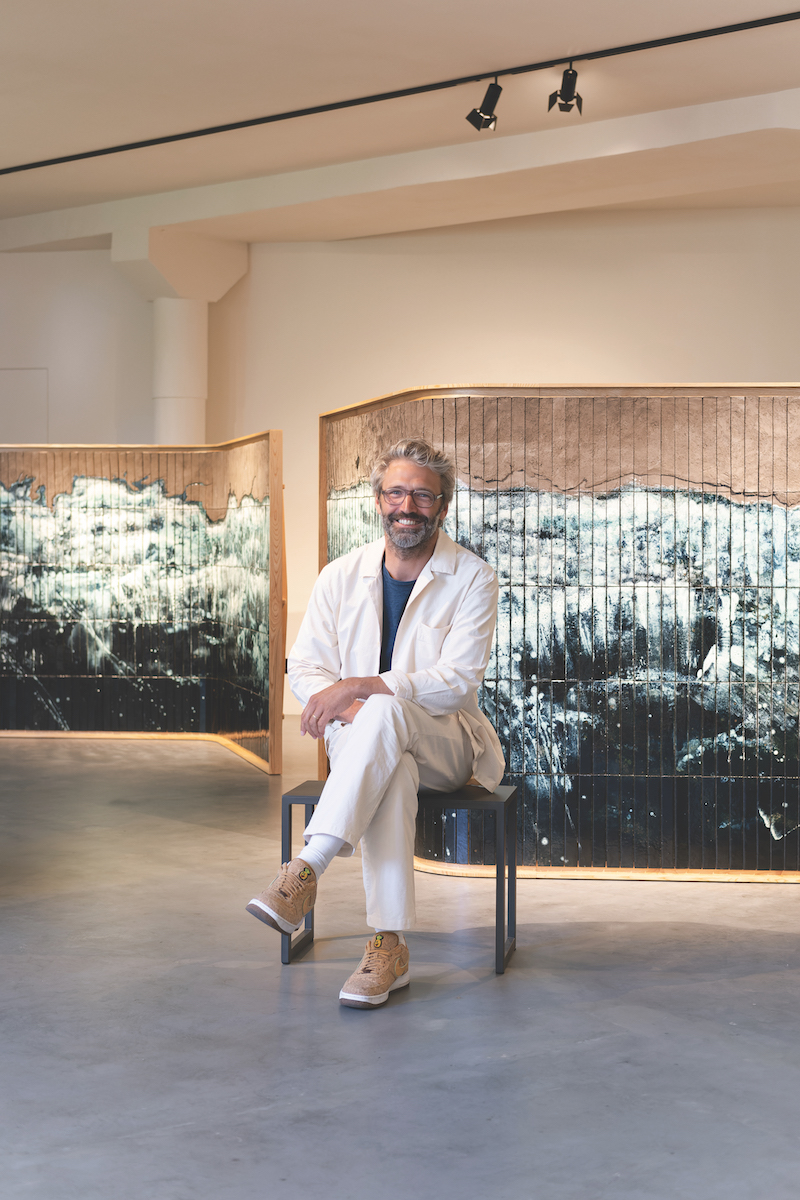Where did your interest in design come from?
Born in the south of France in 1974, I followed the footsteps of my father who was a sculptor. I have an academic training in sculpture from the École Nationale Supérieure des Arts Appliqués et des Métiers d’Art, followed by a degree in furniture design from the renowned Les Arts Décoratifs.
What fuels your creativity?
Most of my inspiration comes from the context of the project I’m doing: the places I see, the people I meet, the materials I use, techniques I discover, the history. The harmony I search for in my work often comes from the inspiration I get from the natural environment. Fuelled by a rich creative background and travel, I approached design with an instinct and sensibility that gives form to projects ranging from furniture, bespoke, limited-edition collections and projects that arise from long-term relationships.
Where did the idea to join sculpture with furniture design originate?
This is certainly a part of my father’s influence, though I do believe they are two separate disciplines. I am attached to the idea that an object must be a way of conveying emotions and that the emotions come from the shape. That’s how some objects could feel closer to sculpture than others.
Can you say, with references to cultural tradition, how Portugal and Portugese culture finds its way into your practice?
Choosing a new country forces one to look at and perceive things in a different way. I grew up in Brittany in France, was living in Paris, and was looking for a place to breathe. Portugal is a country undergoing change — it feels now that it is in transition, rooted in heritage but always in motion. It has been anchored by necessity to certain traditions, attached to a certain form of simplicity which, in my opinion, is essential. In Portugal, there is always the reminder of earth and sea. The sea, a link between the diversity that creates unity in this country, allows us to think, to project, to dream and to settle into the vastness of horizon and space. The earth, on the other hand, invites us to make and to realise. Exploring Barro Negro pottery from the Tondela region; Bunho, vegetal fiber harvested by artisans near Santarém; Cork sourced from Algarve; stone from the quarries of Estremoz or bronze from Peniche; our endless search for Portuguese crafts and skills is a captivating way to get to know and experience Portugal’s regions in depth.
You say you use a wide array of materials and operate on a cross-disciplinary level.
All my projects are born from their ever-changing context, hence the mix of disciplines that intertwine according to the story we want to tell. Drawing with pen and paper is the first step for me. Then I usually speak with my teams and pass on the design for them to visualise in 3D. From there, I am always drawn most to raw, natural materials.
We were especially drawn to your 2021 project, titled Madonna Del Monte — Punta Coterie Murano. Could you tell us more about these pieces?
At first, inspiration came from the work of photographer Lucie Jean called Down by the water, focusing on a small island of Venice lagoon called Madonna del Monte. I was moved by the water in movement, grounding on the banks of the abandoned island after the ride of a vaporetto on the lagoon. I also liked the contrast of textures between liquid elements, the cloudy sky and the brick walls in ruins — perfect components to start a fascinating design project with glass. This practice has given rise to more organic forms, ones which are truly linked to the material and dictated by the breath rather than by the idea of a mould that imposes this relationship to the object.
What has been the most enjoyable project you have worked on to date and why?
The Made In Situ project that has been nurtured in me for years and which is gradually being expressed through our collections. But I also like to conceive exchanges over time and maintain this relationship with the human being which is not necessarily linked to industry. Relationships such as with Bernhardt Design, Saint Louis and others have grown over time and I intend to continue these beautiful collaborations.
Do you have a collection of designed objects in your own home?
I have many sculptures and drawings done by my father. There is also a photographer I love, Charles Frégé, and I own two of his prints. I discovered his work with the project he did in Japan, for me, these pictures were always talking about another part of the world, then I discovered that he did the same project (Wilder Mann) in Portugal. We are going to work on a project together. Philolaos Tloupa’s work also as a home with me. Though he is a friend of the family, and though I’ve grown up with a familiarity with his work, he continues to surprise me with new, beautiful things. The last that comes to mind is Claire de Santa Coloma, an Argentinian artist whom I discovered in Lisbon, and who works with wood. She has an interesting approach to the relationship between the sculpture itself, the environment that surrounds it, and the spectator.
Do you have any exciting projects on the horizon?
Bronze and Beeswax is my latest project in Portugal. Comprising 15 candleholders in total, the collection divides into two different families: Lux and Flux. Where Lux is a tribute to light, Flux is an homage to beeswax. Bronze and Beeswax is showing in exhibition in Lisbon from 9 February 2023 to June 2023.

